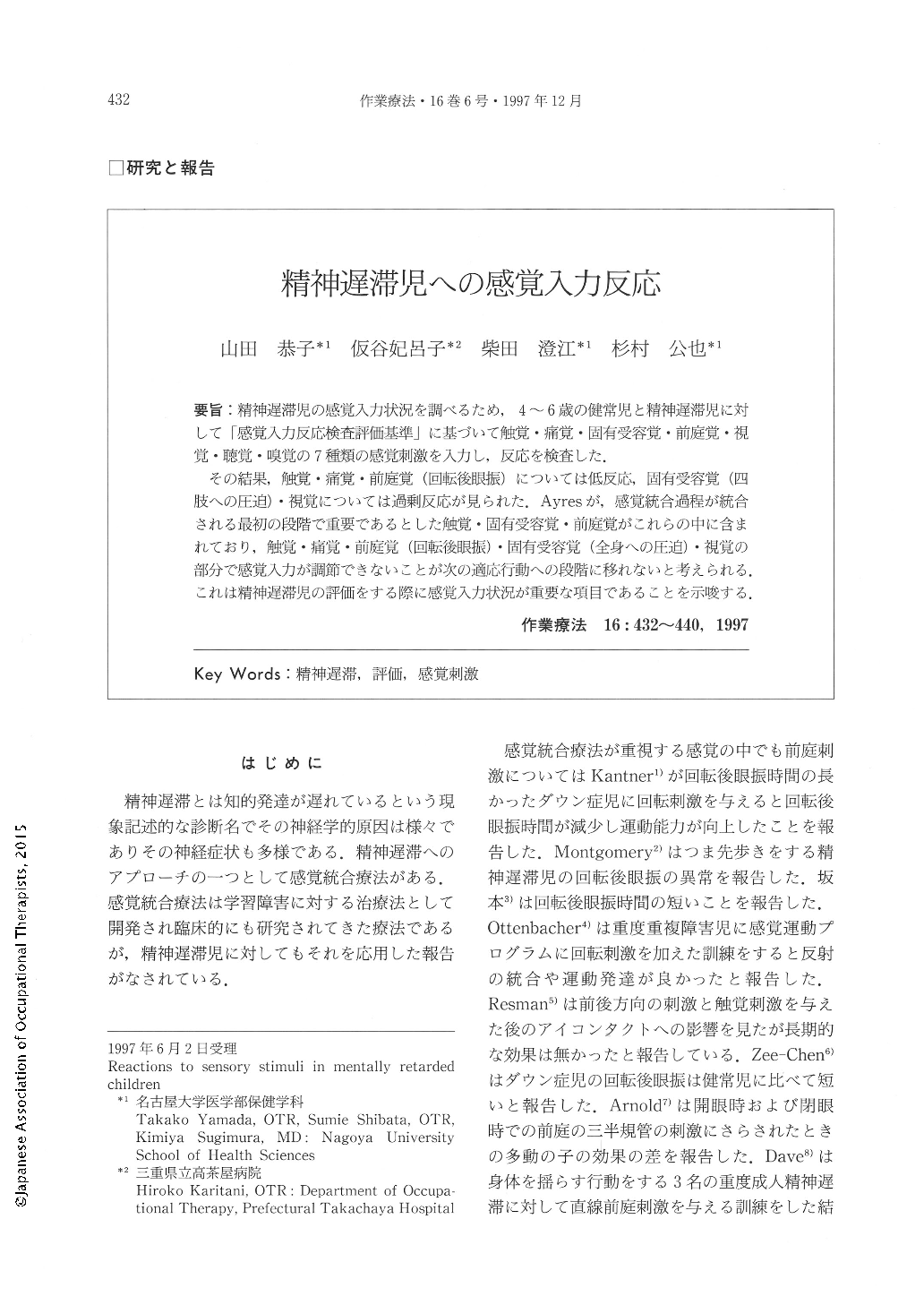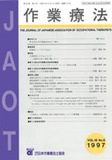Japanese
English
- 販売していません
- Abstract 文献概要
- 1ページ目 Look Inside
- 参考文献 Reference
要旨:精神遅滞児の感覚入力状況を調べるため,4〜6歳の健常児と精神遅滞児に対して「感覚入力反応検査評価基準」に基づいて触覚・痛覚・固有受容覚・前庭覚・視覚・聴覚・嗅覚の7種類の感覚刺激を入力し,反応を検査した.
その結果,触覚・痛覚・前庭覚(回転後眼振)については低反応,固有受容覚(四肢への圧迫)・視覚については過剰反応が見られた.Ayresが,感覚統合過程が統合される最初の段階で重要であるとした触覚・固有受容覚・前庭覚がこれらの中に含まれており,触覚・痛覚・前庭覚(回転後眼振)・固有受容覚(全身への圧迫)・視覚の部分で感覚入力が調節できないことが次の適応行動への段階に移れないと考えられる.これは精神遅滞児の評価をする際に感覚入力状況が重要な項目であることを示唆する.
We tested reactions to sensory stimuli in mentally retarded children based on the standard for evaluation of tests on reactions to sensory inputs, i. e., touch, pain, proprioception, vestibule, vision, hearing and smell. The results showed the hypo-reactions to the sensory stimuli of touch, pain and vestibular stimuli (post-nystagmus), and the hyper-reactions to the stimuli of proprioception and vision in the mentally retarded children. Ayres proposed that touch, proprioception and vestibular stimuli are important in early stages of sensory integration; hypo- or hyper-sensitivities to those sensory stimuli may be one of the reasons for retardation in the tested children of this study. It is suggested that the sensory stimuli of touch, proprioception and vestibular stimuli are important factors in the evaluation of sensory intergration in mentally retarded children.

Copyright © 1997, Japanese Association of Occupational Therapists. All rights reserved.


